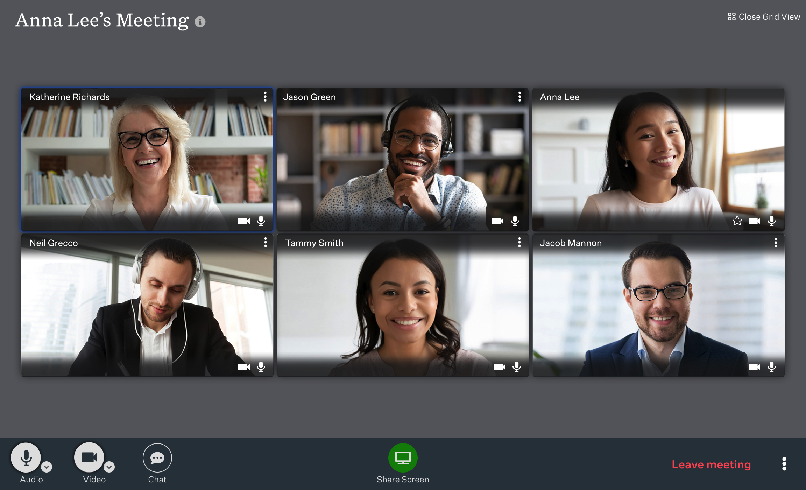21 top virtual call center tips for success

In recent years, there has been, and continues to be, a dramatic shift to a remote and hybrid workforce. And that includes call centers. Enter virtual call centers. With outlets like Forbes reporting that by the year 2025, 32.6 million Americans are expected to work remotely, some of those remote workers will join the ranks of virtual call center employees.
When you call a customer support line, you don’t know if you’re reaching a traditional or virtual call center. So, what’s the difference between the two? It’s on the other end of the call. A traditional call center is in-house, where agents work in the same location, while a virtual call center uses remote employees from many locations, often at home. For a virtual call center, overhead cost is much lower since you aren’t paying for things like office space. Technology such as VoIP has made it much easier and less expensive to set up your employees from anywhere in the world, and solutions, like call queueing, make it easier to staff for varying call levels—agents can just log on and open their queue to answer calls during peak times.
The benefits of a virtual call center often outweigh a traditional call center, and Ooma wants to help you make the most out of it. To keep your virtual call center running in tip-top shape and maximize customer experience, we’ve compiled a list of call center best practices.
Best contact center technology
Knowing the technology you need for your call center setup is key in a well-executed virtual call center. To begin with, it’s important to realize the difference between a contact center vs. a call center. A call center deals with just that: phone calls. A contact center deals with multiple ways you can communicate with your customers, such as emails, text and chat. The two phrases are often used interchangeably, and while a simple call center might utilize the same phone technology as a contact center, a contact center needs technology with capabilities to contact customers beyond answering calls. Here are our best tips when it comes to technical call and contact center solutions:
1. Don’t let agents use their own devices. As a general rule of thumb, ensure your agents use your equipment, not their personal devices. By providing them with your contact center technology, you are helping create a cohesive experience for your callers with known audio quality, and you’re cutting down on security vulnerabilities.
2. Provide equipment. That means providing your agents with a computer and headset that meet your technical specs and features while also integrating with your existing tech stack.
3. Use VoIP (Voice over Internet Protocol) technology. Let’s face it: landlines are a dying breed, and you can’t run a virtual call center, or a virtual contact center for that matter, without VoIP technology. VoIP offers more business features and a more reliable connection at generally a lower cost.
4. Send your call center to the cloud. Using VoIP gives you the opportunity to add a cloud call center. While this sounds very celestial, a cloud-based phone system simply means that the servers and associated hardware that run the system are located and maintained offsite, generally by a third-party service provider. Your business then connects to the phone system through the internet. This provides many perks, like reduced equipment costs, automatic updates, enhanced system performance, and quick (within an hour) setup for your agents. And best of all, it removes the hassle of hosting and maintaining a phone system in your facility.
5. Integrate your communication platforms. Connecting your virtual call center to your business applications makes it easy for your team to be more productive. Look for a phone system provider that offers advanced customer relationship management (CRM) integrations. This way your phone system can automatically pull data from your CRM and you can improve efficiency and productivity by doing things like entering notes about conversations with customers.
6. Analyze your metrics. Measure the success of your virtual call center with transparent, real-time reporting dashboards and analytics. This makes it easy to get a big picture view of the system or home in on the performance of each agent.
7. Consider a virtual receptionist. A virtual receptionist enables your company to provide callers with frequently requested information and direct incoming calls to the right departments. This frees up your agents to handle those callers who need more support.
8. Set up interactive voice response (IVR). An IVR menu and call flow allows your callers to make selections based on their needs before they talk to a representative. When set up correctly and coupled with a virtual receptionist, the two can inform and guide customers to their desired representative or solution, improving the overall customer experience.
9. Utilize call routing. Call routing is the practice of transferring calls either by a call center operator or an IVR system. Both are effective at helping your customers get to the destination they seek.
10. Take advantage of call queuing. Call queuing is when your callers are placed in a queue, and their call is answered by the next available representative or routed to a ring group or individual.
11. Play on hold music. You will inevitably need to put some callers on hold, whether during a call park or call queuing. Using the right hold music can dramatically influence their mood. Consider tunes that appeal to your customers, match your brand, are seasonal, relevant and fade into the background.
Inbound call center best practices
Once you’ve figured out your technology, there is still much you can do to improve your virtual call center. A lot of it comes down to your agents. You must be sure you are a customer-obsessed operation. The following will help you accomplish that.
12. Hire smart. Having a virtual call center means you can hire from anywhere in the world. That’s right, take advantage and hire the best of the best, no matter their location. When hiring agents for your contact center phone systems, look for the following qualities: patience, a positive and upbeat attitude, clear communication skills and creative problem-solving skills.
13. Provide unified onboarding and training. Once you hire the best of the best, it’s important to provide a streamlined onboarding process, unified training and continuous learning opportunities. This will keep your team motivated, satisfied and help ensure you present cohesive service to your callers.
14. Give access to a knowledge base. Once initial training is complete, reinforce your processes and contact center solutions by providing agents with resources and subject matter experts they can consult while on calls.
15. Establish a call center script. You don’t need a complicated script—a simple, customized call center script that your agents can use is helpful to both agents and the caller. Include a basic greeting and your company name. Then make sure your agents listen, pay attention, take notes if needed, empathize with the caller and ultimately provide a solution.
16. Listen in. Monitor agent performance by recording or listening in on calls. You don’t have to do this for every call, but spontaneously checking in will keep agents performing their best.
Call center metrics to track
The last part of virtual call center success is tracking and using your data to make data-driven decisions based on your goals. The following are some important metrics and how they help your virtual call center.
17. Know your abandonment rate. Your abandonment rate is the average number of calls that are abandoned by your customers. Aim for under five percent.
18. Track your average handle time (AHT). This will help you understand how long it’s taking your agents to help your customers. Lower handle times mean your operators are doing their job efficiently, which typically results in better customer loyalty and retention.
19. Gauge your customer satisfaction (CSAT). You can easily do this with customer surveys at the end of your calls. Surveys will help you track the number of happy customers you have out of total customers—something you always want to keep a pulse on and work to consistently increase. Customer surveys will also help you pinpoint areas where you can improve.
20. Understand your first call resolution (FCR). This means tracking how often your call center can resolve a call the first time around without needing a follow-up call from you or, worse, requiring the customer to call back. Anything between 70 and 79 percent is considered standard, but more importantly, you want your FCR to be high or consistently go up, which shows improved efficiency.
21. Know your response time. Put simply: How long do your customers wait before being connected to an operator? The shorter the wait time, the happier the caller!
If you would like to learn more about anything discussed in this article, Ooma can help. Ooma provides VoIP business phone solutions, including tools to run a successful virtual call center. To learn more, call us at (877) 345-8847 or check out how to improve customer experience.

Learn more about how Ooma Office can help your business.
Thank you!
An Ooma Office Sales Representative will be in touch shortly.
866-573-0707


Learn more about how Ooma Office can help your business.
Just call 877-621-0515 or click this to CHAT. Or, fill out this form and someone will reach out to you shortly.



